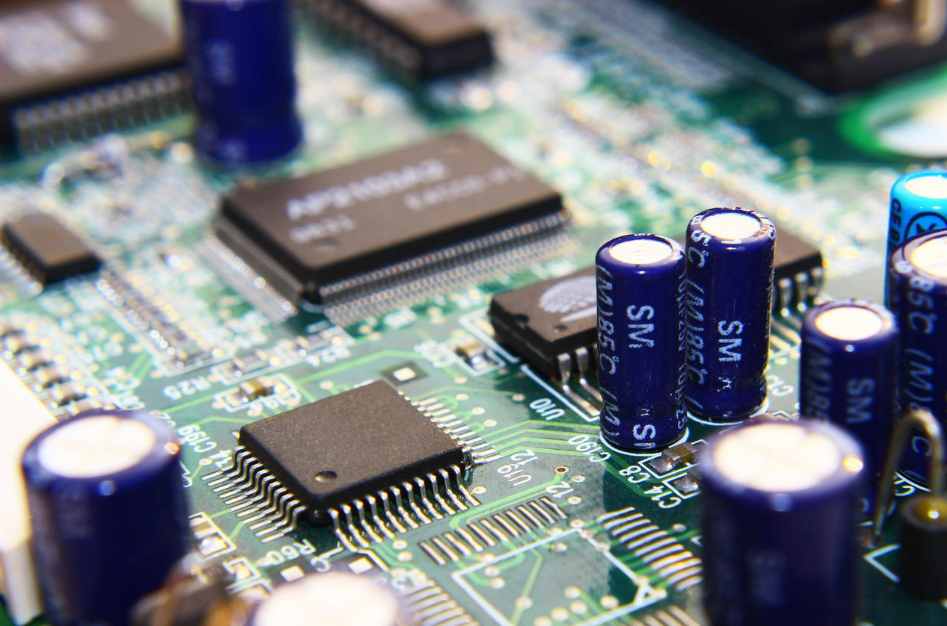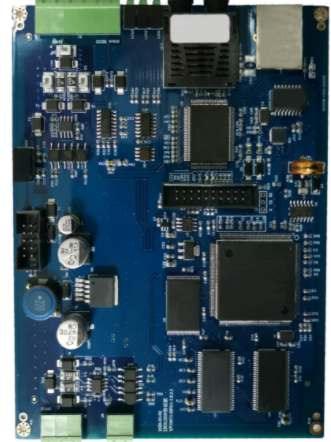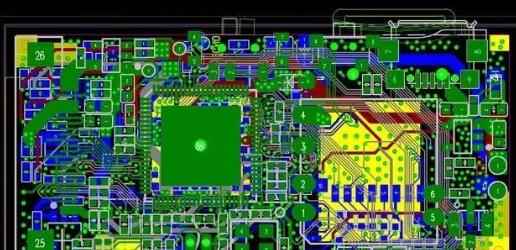
For larger components mounted on the printed circuit board, metal attachments should be fixed to improve vibration resistance. Impact resistance.
The general PCB basic design process is as follows:Preliminary preparation →PCB structure design →PCB layout → Wiring → routing optimization and silk screen → Network and DRC inspection and structure inspection → Plate-making.
First, preparation. This includes preparing component libraries and schematics. Before PCB design, the component library of schematic SCH and PCB should be prepared first. The component library can be used with peotel's own library, but in general it is difficult to find suitable, it is best to make your own component library according to the standard size data of the selected device. In principle, make PCB component library first, then make SCH component library. The requirement of PCB component library is high, which directly affects the installation of the board. SCH component library requirements are relatively loose, just pay attention to the definition of pin attributes and the corresponding relationship with PCB components on the line. PS: Note the hidden pins in the standard library. After that is the schematic design, ready to start to do PCB design.
Second: PCB structure design. In this step, according to the size of the circuit board and various mechanical positioning, PCB board surface is drawn in the PCB design environment, and the required connectors, keys/switches, screw holes, assembly holes and so on are placed according to the positioning requirements. And fully consider and determine the wiring area and non-wiring area (such as how much of the area around the screw hole belongs to the non-wiring area).
Third: PCB layout. Layout is simply putting devices on the board. At this point, if the above mentioned preparation is done, you can generate the network table on the schematic diagram. Create Netlist), and then import the network table on the PCB (Design-> Load Nets). I saw the devices all piled up, and there were flying lines between the pins. Then you can lay out the device.
The general layout is carried out according to the following principles:
(1) According to the electrical performance reasonable partition, generally divided into: digital circuit area (fear of interference, and interference), analog circuit area (fear of interference), power driving area (interference source);
(2) To complete the same function of the circuit, should be placed as close as possible, and adjust the components to ensure that the connection is the most concise; At the same time, adjust the relative position between the functional blocks to make the connection between the functional blocks the most concise;
(3) Installation position and installation strength should be considered for components with high quality; The heating element should be placed separately from the temperature sensitive element, and the heat convection measures should be considered if necessary;
(4) I/O driving device as close as possible to the edge of the printing plate, close to the outlet connector;
(5) Clock generator (such as crystal oscillator or clock oscillator) should be as close to the device that uses the clock as possible;
(6) In each integrated circuit between the power input pin and ground, need to add a decoupling capacitor (generally using high frequency performance good monolithic capacitor); When the board space is dense, a tantalum capacitor can also be added around several integrated circuits.
(7) the discharge diode (1N4148) should be added to the relay coil;
(8) The layout requirements should be balanced, dense and orderly, not top-heavy or heavy
-- Special attention should be paid to the actual size (area and height) and relative position between components when placing components, so as to ensure the electrical performance of the circuit board and the feasibility and convenience of production and installation. At the same time, under the premise of ensuring that the above principles can be reflected, the placement of components should be appropriately modified to make them neat and beautiful. Such as the same device to be placed neatly, in the same direction, can not be placed "patchwork".
This step relates to the overall image of the board and the next level of wiring difficulty, so a little to take great effort to consider. Layout, not sure of the place can be made preliminary wiring, full consideration.

Fourth: wiring. Wiring is the most important process in PCB design. This will directly affect the performance of PCB board. In the process of PCB design, wiring generally has such three levels of division: the first is the cloth, the most basic requirements of PCB design. If the line is not spread through, get everywhere is flying line, it will be a substandard board, can be said to have not yet. The second is to meet the electrical performance. This is a measure of whether a PCB board is up to scratch. This is after the cloth Tong, carefully adjust the wiring, so that it can achieve the best electrical performance. Then there is beauty. If your wiring cloth through, there is no effect on electrical performance, but a look at the past disorderly, plus colorful, colorful, even if your electrical performance is how good, in the eyes of others or a piece of garbage. This brings great inconvenience to testing and maintenance. Wiring should be neat and uniform, not criss-cross without any rules. These should be achieved in the case of ensuring electrical performance and meeting other individual requirements, otherwise it is to neglect the essentials.
Wiring is mainly carried out according to the following principles:
(1) In general, the power cord and ground wire should be wired first to ensure the electrical performance of the circuit board. It is best that the ground cable is wider than the power cable. The relationship between the ground cable and the power cable is as follows: Ground cable > power cable > Signal cable. Generally, the width of signal cable is 0.2 ~ 0.3mm, and the maximum width can be 0.05 ~ 0.07mm. The PCB of digital circuit can be formed into a circuit of wide ground wires, that is, to form a ground network to use (the ground of analog circuit can not be used in this way).
(2) In advance to the requirements of strict line (such as high frequency line) wiring, input and output side lines should avoid parallel adjacent, so as to avoid reflection interference. Grounding should be added when necessary, two adjacent layers of wiring should be vertical to each other, parallel easy to produce parasitic coupling.
(3) the oscillator housing is grounded, the clock line should be as short as possible, and can not lead everywhere. Under the clock oscillator circuit, the special high-speed logic circuit should increase the area of the ground, rather than other signal lines, so that the surrounding electric field tends to zero;
(4) As far as possible, 45o polyline wiring, not 90o polyline, in order to reduce the radiation of high-frequency signals; (Double arcs are also used for high demand lines)
(5) Any signal line should not form a loop, if inevitable, the loop should be as small as possible; Signal line holes should be as little as possible;
(6) The key line should be as short and thick as possible, and protective ground should be added on both sides.
(7) When sensitive signals and noise field signals are transmitted through flat cables, they should be led out by the way of "ground - signal - ground".
(8) Key signals should be reserved for testing points to facilitate production and maintenance testing
(9) After schematic wiring is completed, wiring should be optimized; At the same time, after the preliminary network inspection and DRC inspection were correct, the ground wire was filled in the unwired area, and a large area of copper layer was used as the ground wire. On the printed board, the unused places were connected to the ground as the ground wire. Or made of multilayer board, power supply, ground wire each occupy a layer.









